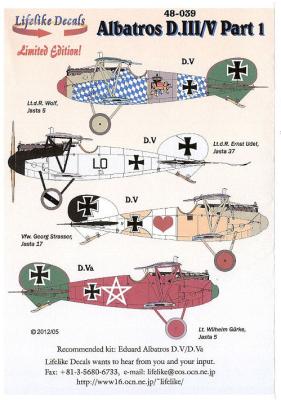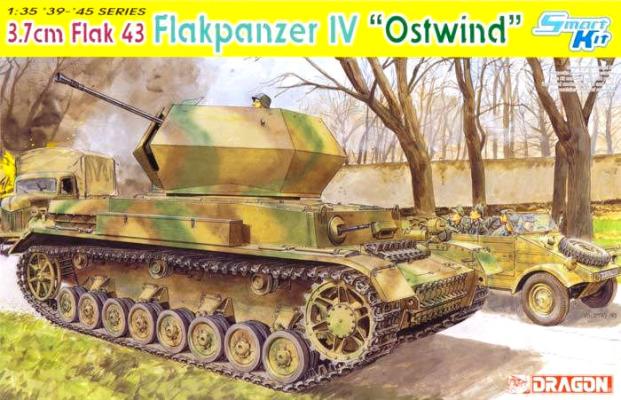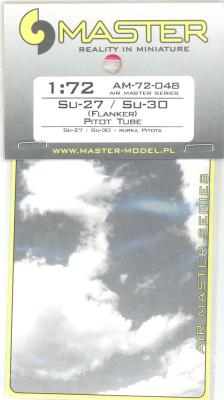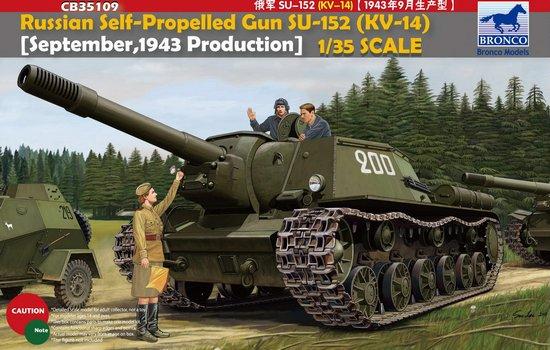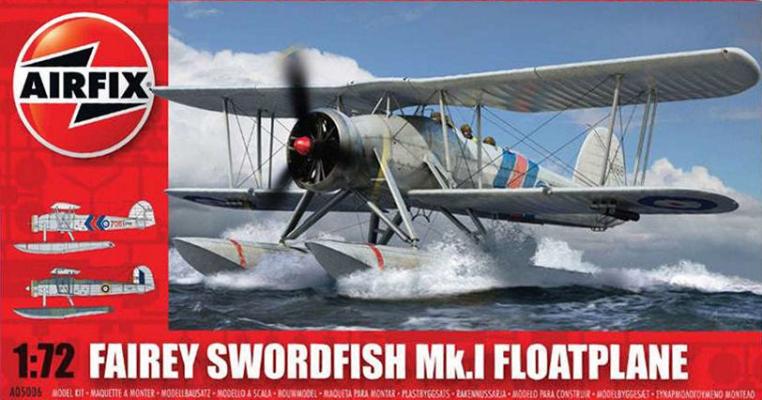Dust off all those Eduard Albatross DV and DVa kits that you have, because Lifelike has released two new decal sheets with new markings not previously produced. And, one is very colorful, in typical Bavarian fashion. The title says DIII, but the markings included on the sheets are for three DV’s and one DVa. With each of the aircraft views is a history of the aircraft and its pilot and various color notes and conjectures about any differences from the markings included.
Welcome to the IPMS/USA Reviews site!
Introduction: The primary organization of the IPMS/USA Review website is by IPMS/USA National Contest Class. Within each Class there are sub-menus by kits, decals, books, etc. The Miscellaneous Class is for items that are not class specific or that cross two or more classes.
IPMS/USA Members: We encourage you to submit reviews, both here and to the Journal. To volunteer for membership in the IPMS/USA "Reviewers Corps" and submit your own reviews, please read the Guidelines For Submitting Product Reviews.
Manufacturers, publishers, and other industry members: IPMS/USA is pleased to offer your company the opportunity for product reviews. All product reviews are performed by IPMS/USA members, and are posted in the publicly-accessible section of our website. With very few exceptions, we perform full build reviews of new kit releases, aftermarket products, and supplies. If you would care to provide product samples for review, please contact John Noack, IPMS/USA 1st VP.
To learn more about IPMS/USA, please see our About Us page.
The Flakpanzer IV “Ostwind” (German for East Wind) was a self-propelled 3.7cm anti-aircraft gun based on the Pz IV. It was developed in 1944 as a replacement for the Wirbelwind. The number of units produced was about 43.
This is a multimedia kit comprised of 700+ styrene parts, magic tracks, two photo etched fret, decals, and the set of instructions that need to be reviewed very carefully before gluing any parts together. Most Dragon models today are a collection of old sprues and new sprues added to create a new kit variant. In this case, Dragon has done so and you will have some sprues with the same letter. You can actually build the production version of the Ostwind.
Step 1. This step is the assembly of the idler wheel, drive sprockets, road wheels, and return wheels. There are no problems here, other than the removal of the mold line which is noticeable on the road wheels.
A while back (a couple of years?), I built ICM’s 1/72 Su-27 for a review. I can’t remember the reason, but I wound up using a cut-off straight pin for the pitot on the kit. Well, here’s the fix for that.
I had to pull the pin out of the nose of the ICM kit, then clean up the end of the nose where some CA had built up. Then, all that was necessary was to insert the new pitot, check its fit, remove it, put some gel-type CA on the pitot, and insert it. I kinda lucked out here, as the hole for the straight pin was as large as I needed for the new pitot. Master Model also gives the correct angle for the pitot, which is lacking in the kits.
After the CA had set, a matter of minutes, I painted the new pitot. DONE!!
Overall Evaluation
Highly recommended. It’s an easy fix, it fits nicely, and I had zero problems with this add-on. I’ll have to pick up another one of these to fix the Hasegawa Su-27 on the shelf next to the ICM kit.
History
The Red Army entered WWII with most of its heavy artillery drawn by horses, making its movement slow and vulnerable to attack. The KV-2 assault gun was built to address the need for mobile artillery, but it was unsatisfactory as a fighting vehicle, mainly because of its large and overweight turret. It was therefore decided to replace the KV-2 with a new vehicle based on the KV-1S chassis. But instead of a turret, the 152mm ML-20S gun-howitzer would be mounted in a low-profile casemate. Several designs were put forward, but the KV-14 showed most promise and was further developed into the SU-152 by February, 1943. This self-propelled gun weighed 45.5 tons and had armor up to 75mm thick; powered by a 600bhp V-2k diesel engine, it had a top speed of 43km/h. It was built at the Chelyabinskiy Kirovsky factory until replaced in production by the ISU-152 in December, 1943.
History
The Fairey Swordfish, while appearing to be outdated at the beginning of World War II, actually became one of the outstanding airplanes used by the Royal Navy’s Fleet Air Arm. While most were land- or carrier-based with wheeled undercarriages, a significant number of Swordfish Mk. I’s were operated as twin-float seaplanes, mainly from battleships and cruisers, or from shore bases such as Gibraltar, where they were used for fleet reconnaissance, gunfire spotting, and anti-submarine patrol. Probably the most famous action in which Swordfish floatplanes took part was the April, 1940, Second Battle of Narvik, where they spotted gunfire for HMS Warspite, resulting in the destruction of seven German destroyers, plus the sinking of the submarine U-64 with bombs.











